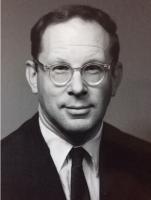
Jack Erickson
26 April 1933 — 16 February 2018
John Clifford (Jack) Erickson Jr. was born in Cleveland Heights, Ohio, and was a 1951 graduate of Cleveland’s Shaw High School. He received a Bachelor of Science in Engineering Physics from Cornell University in 1956, and a PhD in Aeronautical Engineering, also from Cornell, in 1962. As a student Jack worked for NASA on jet noise research. His career included working for Therm Advanced Research in Ithaca, New York., Calspan and Arvin-Calspan in Buffalo, New York, and Calspan at Arnold Engineering Development Center in Tullahoma, Tennessee. He retired to State College, Pennsylvania in 1997.
Jack was well known for his work in aerodynamics, computational fluid dynamics, static thrust, adaptive wall wind tunnels and propeller theory. He was a member of the Sigma Xi Scientific Research Honor Society, the Triangle Fraternity at Cornell (where he served as President), the American Institute of Aeronautics and Astronautics, Experimental Aircraft Association, and the Aircraft Engine Historical Society. Jack was also involved in a Working group in Aerodynamics for the Advisory Group for Aerospace Research and Development (AGARD), a NATO agency that existed from 1952 to 1996. In addition to his technical interests, Jack enjoyed spending time with family, reading aviation history, listening to classical music and opera, sailing, playing softball, and serving on the Tullahoma, Tennessee Concert Committee.
After retirement, Jack developed this extensive and exhaustively researched compilation on horizontally-opposed aircraft engines, which the AEHS is pleased to host. We encourage its users to submit additions, updates and corrections.